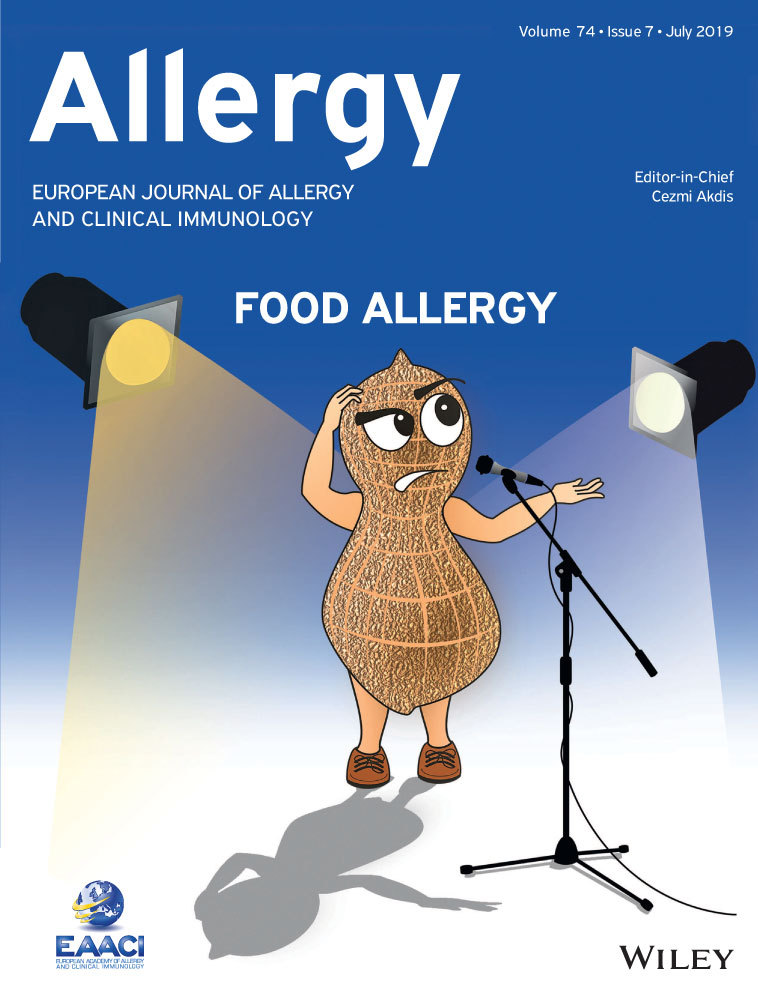Increased expression of L-plastin in nasal polyp of patients with nonsteroidal anti-inflammatory drug-exacerbated respiratory disease
Funding information
This study was supported by a Grant-in-Aid for Japan Agency for Medical Research and development, AMED (no. 16ek0109062 h0003, no. 17ek0410040s0501), a Grant-in-Aid for Scientific Research (KAKENHI) (C) Grant Number 16K11207. RPS was supported by Grants R37HL068546 and U19AI106683 (Chronic Rhinosinusitis Integrative Studies Program (CRISP)) from the NIH and by The Ernest S. Bazley Charitable Fund.
Abstract
Background
Most patients with nonsteroidal anti-inflammatory drug-exacerbated respiratory disease (NERD) suffer from recurrence of nasal polyps. However, little is known about the specific cellular and molecular mechanisms contributing to the pathogenesis of nasal polyp development in patients with NERD in particular, especially at baseline when cyclooxygenase 1 inhibitors are not present. The objectives of this study were to identify proteins involved in the pathogenesis of nasal polyps in patients with NERD.
Methods
We collected nasal polyp tissue from patients with NERD and from patients with aspirin-tolerant chronic rhinosinusitis with nasal polyps (CRSwNP). Protein profiles were analyzed by 2-dimensional electrophoresis and identified several proteins, including L-plastin, as highly expressed. We examined L-plastin and tissue factor (TF) expression by immunohistochemical and immunofluorescence analyses. To examine the role of L-plastin in eosinophils, we knocked down L-plastin expression in Eol-1 cells by using siRNA transfection.
Results
L-plastin protein levels in nasal polyp tissue were increased in patients with NERD relative to those in patients with aspirin tolerant CRSwNP. Immunofluorescence analysis revealed that L-plastin was dominantly expressed in eosinophils and L-plastin and TF were co-expressed in eosinophils in NERD nasal polyp tissue. Knockdown of L-plastin in Eol-1 cells disrupted the cell surface distribution of TF by stimulation with granulocyte macrophage colony-stimulating factor.
Conclusion
Increased expression of L-plastin by eosinophils may contribute to abnormal fibrin deposition through TF translocation to the eosinophil cell surface in NERD nasal polyp tissue, which in turn may contribute to the pathogenesis of NERD.
Graphical Abstract
Increased expression of L-plastin, the leukocyte-specific actin-bundling protein, co-expressed with TF in eosinophils in NERD nasal polyp tissue. L-plastin translocate TF to eosinophil cell surface, which in turn initiates extrinsic coagulation cascade by binding to FVIIa and induces subsequent excessive fibrin deposition in the nasal submucosa. L-plastin is also implicated in cytokine release or migration of eosinophils. TF, tissue factor; NERD, nonsteroidal anti-inflammatory drug-exacerbated respiratory disease; FVIIa, clotting factor VIIa.
CONFLICT OF INTEREST
The authors declare that they have no conflicts of interest.





